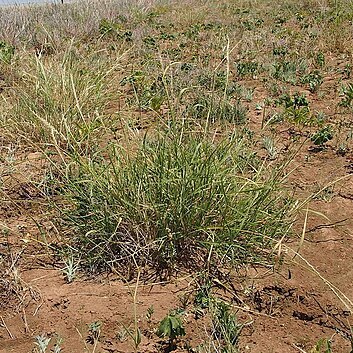A dense tussocky grass. It keeps growing from year to year. It grows 20-100 cm high. There are short stout rhizomes. These have erect branched stems. The butts are often knotty. They can be covered with shining scales. The leaf sheaths are tight. The edges of the leaves are sharp and can become curly and twisted with age. The flowering stalk is 7-8 cm long.

